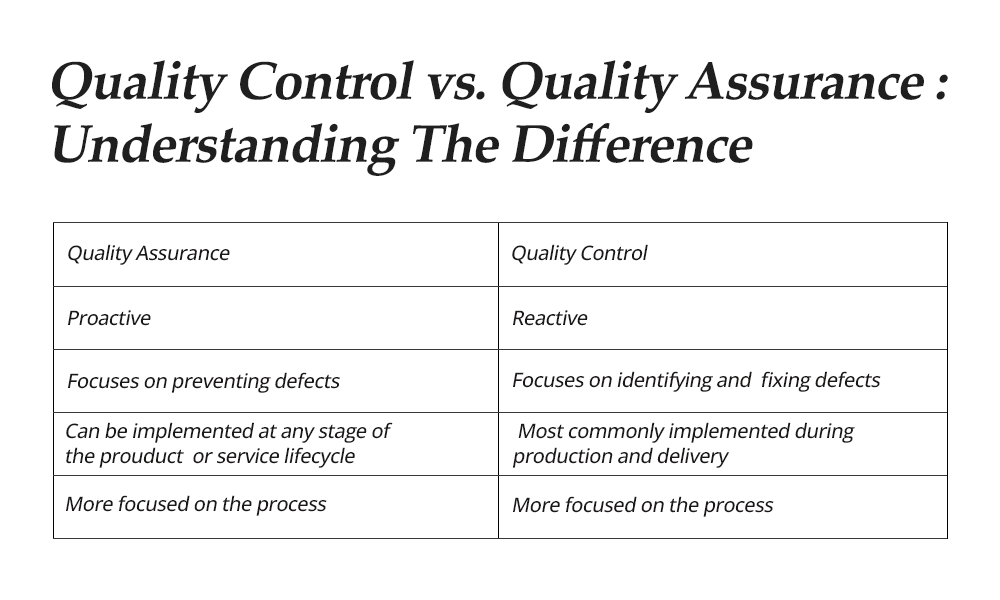Quality Assurance And Inspections
Wed, Aug 23, 2023
Read in 6 minutes
Discover the crucial role of quality assurance and inspections in maintaining excellence across industries. Explore effective strategies, methods, and benefits for ensuring high standards and customer satisfaction. Learn about quality control techniques, inspection protocols, and the impact of data-driven approaches on continuous improvement.

In today’s competitive world, where top notch prices and services are the only things that keep your customers satisfied, quality is often sidetracked and overlooked. But one must keep in mind that it too plays a vital role in gaining that competitive edge. And the role of inspections in ensuring product quality is pivotal.
Quality assurance and inspections play a pivotal role in upholding high standards, ensuring customer satisfaction, and fostering continuous improvement. In this blog, we delve into the world of quality assurance and inspections, exploring effective strategies, methodologies, and their far-reaching benefits.
The Importance of QA And Inspections
QA and inspections are important for a number of reasons. They can help to:
- Reduce defects and errors
- Improve customer satisfaction
- Increase productivity
- Comply with regulations
- Protect the brand reputation
The Role Of Inspections In Maintaining High Standards
Inspections are the bedrock of quality assurance, providing a means to evaluate products, processes, and systems. They include various methods, ranging from visual checks to thorough inspections, with the goal of finding differences from established standards. Inspections serve as an early warning system, detecting potential issues before they escalate and mitigating risks that could impact product quality, safety, and performance.
Whether in manufacturing, healthcare, food, construction, security, cleaning or any other field, inspections serve as a means to ensure that processes, products, services, and facilities meet established quality and safety standards. Here’s an overview of the role of inspections in maintaining high standards:
Quality Assurance
Inspections are a fundamental component of quality assurance. They involve systematic assessments of products, services, processes, and facilities to verify whether they adhere to established standards and specifications. By identifying deviations from these standards, inspections help prevent the production of subpar or defective goods, ensuring that only high-quality products reach customers. Role of inspections in ensuring product quality is vital and helps the businesses in the long run.
Mitigating Risks
In industries where risks are inherent, inspections serve as a protective barrier. For instance, in the pharmaceutical sector, inspections are crucial to ensure that drugs are safe, effective, and in compliance with regulatory standards. In the construction field, inspections prevent structural flaws that could lead to catastrophic consequences. By identifying and rectifying potential risks through inspections, organizations safeguard not only their reputation but also human lives. Quality standards will surely soar through the roof; the risks are identified at an early stage.
Data-Driven Decision Making:
Modern inspections are far from subjective evaluations; they are increasingly becoming data-driven. Inspection data is valuable for making informed decisions, identifying trends, and predicting future outcomes. This data can guide organizations in making strategic choices, from process enhancements to investment decisions. Different inspection methods will give rise to data driven decision making.
Key Elements Of An Effective Quality Assurance Strategy
In the realm of modern business, quality assurance (QA) isn’t just a buzzword; it’s a strategic imperative. A well-defined quality assurance strategy serves as the foundation for consistent excellence and customer satisfaction. Different inspection techniques need to be installed in any organization for quality assurance.
Effective quality control methods for businesses are important if they want to stay ahead of the competition and provide the best possible facilities to the customers.
Clear Quality Objectives:
At the heart of any quality assurance strategy lies clarity in objectives. These objectives outline what the organization aims to achieve through its quality efforts. Whether it’s minimizing defects, enhancing customer experience, or complying with industry regulations, well-defined quality objectives provide direction and purpose to the strategy.
Standardized Operating Procedures (SOPs):
Standardized operating procedures are the backbone of quality assurance. These documented processes define the step-by-step methods to be followed during various operations. SOPs ensure consistency in practices, reducing variability and increasing the predictability of outcomes. Having SOPs in place minimizes errors, enhances efficiency, and streamlines operations.
Comprehensive Training and Education:
An effective quality assurance strategy acknowledges that the human element is pivotal. Employees need to be well-equipped with the knowledge and skills necessary to carry out quality-focused tasks. Regular training and education programs ensure that the workforce is aware of quality standards, procedures, and best practices.
Continuous Monitoring and Evaluation:
Quality assurance isn’t a one-time effort; it’s an ongoing commitment. Regular monitoring and evaluation of processes, products, and services are crucial. This helps in detecting deviations, identifying potential issues, and taking corrective actions before they snowball into larger problems.
Benefits Of Robust Quality Assurance Measures
Robust quality assurance (QA) measures can help businesses in a number of ways, including:
- Enhanced product quality:
Quality assurance methods contribute to the identification and resolution of defects in products before they reach consumers. This results in an improved overall product experience and heightened customer contentment. Different inspection techniques are bound to enhance the quality of the product
- Cost reduction:
Quality assurance approaches facilitate the early detection and resolution of issues during the development phase, leading to cost and time savings. This is particularly valuable for businesses engaged in the creation of intricate products or services.
- Boosted operational efficiency:
Quality assurance techniques pinpoint areas for process refinement, thereby enhancing efficiency and output productivity. This advantage is particularly significant for businesses seeking to curtail expenses and enhance their financial performance. Quality management is a long term process and it helps in boosting operational efficiency by a large margin.
- Adherence to regulatory requirements:
Quality assurance measures aid businesses in conforming to regulations, safeguarding them against fines and punitive actions. This is of particular consequence for enterprises operating within regulated sectors like healthcare and finance.
- Preservation of brand reputation:
The reputation of a business is a critical asset. Quality assurance practices serve to uphold a business’s brand reputation by ensuring that offerings uphold elevated quality standards.
Quality Control vs. Quality Assurance: Understanding The Difference

The Customer Perspective: How Quality Assurance Impacts Satisfaction
Satisfaction isn’t just a goal; it’s a foundation for sustainable success. Quality assurance (QA) plays a pivotal role in shaping the customer experience, and in this article, we delve into how QA directly impacts customer satisfaction. One of the best proven quality assurance strategies for service industries is through your customers.
Quality assurance (QA) is a critical part of any business that wants to provide a high-quality product or service to its customers. By identifying and fixing defects before they reach customers, QA can help to improve customer satisfaction and loyalty. Benefits of continuous improvement in quality management will only reap if you think from customers’ perspective and deliver the quality of services they need.
Get a Free Trial
Sign up For Newsletter
Latest Blog Posts
Get Started
Start being productive & grow your business
with Novagems




